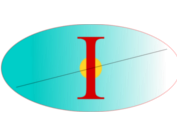Citation:
| egger2014.pdf | 885 KB |
Abstract:
Density functional theory with optimally tuned range-separated hybrid (OT-RSH) functionals has been recently suggested [Refaely-Abramson et al. Phys. Rev. Lett. 2012, 109, 226405] as a nonempirical approach to predict the outer-valence electronic structure of molecules with the same accuracy as many-body perturbation theory. Here, we provide a quantitative evaluation of the OT-RSH approach by examining its performance in predicting the outer-valence electron spectra of several prototypical gas-phase molecules, from aromatic rings (benzene, pyridine, and pyrimidine) to more complex organic systems (terpyrimidinethiol and copper phthalocyanine). For a range up to several electronvolts away from the frontier orbital energies, we find that the outer-valence electronic structure obtained from the OT-RSH method agrees very well (typically within 0.1–0.2 eV) with both experimental photoemission and theoretical many-body perturbation theory data in the GW approximation. In particular, we find that with new strategies for an optimal choice of the short-range fraction of Fock exchange, the OT-RSH approach offers a balanced description of localized and delocalized states. We discuss in detail the sole exception found—a high-symmetry orbital, particular to small aromatic rings, which is relatively deep inside the valence state manifold. Overall, the OT-RSH method is an accurate DFT-based method for outer-valence electronic structure prediction for such systems and is of essentially the same level of accuracy as contemporary GW approaches, at a reduced computational cost.
Notes:
RBaer-Publication



